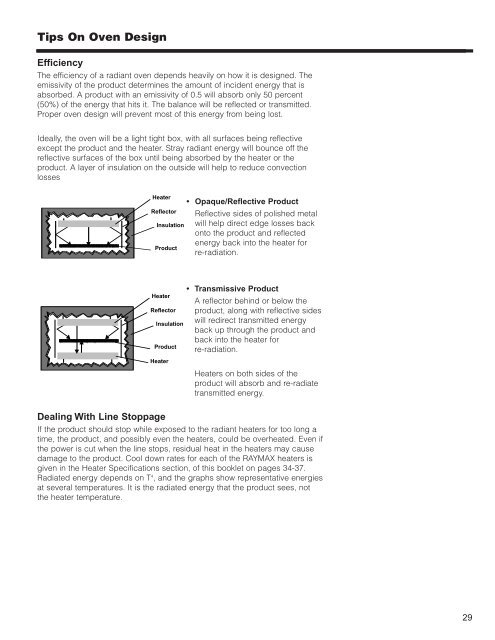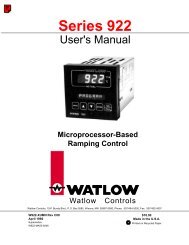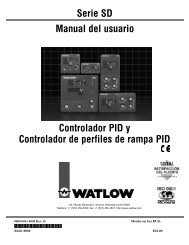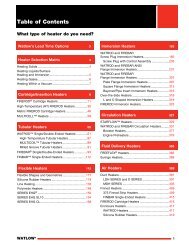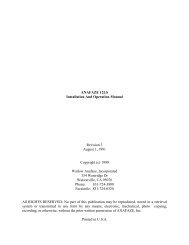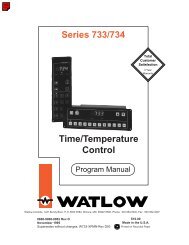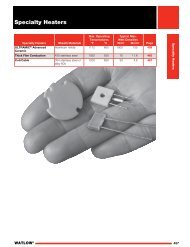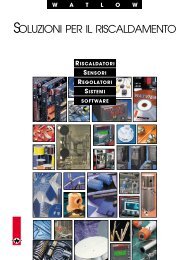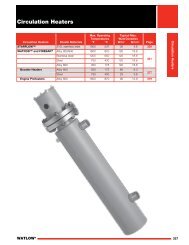RADIANT HEATING WITH INFRARED - Watlow
RADIANT HEATING WITH INFRARED - Watlow
RADIANT HEATING WITH INFRARED - Watlow
You also want an ePaper? Increase the reach of your titles
YUMPU automatically turns print PDFs into web optimized ePapers that Google loves.
Tips On Oven Design<br />
Efficiency<br />
The efficiency of a radiant oven depends heavily on how it is designed. The<br />
emissivity of the product determines the amount of incident energy that is<br />
absorbed. A product with an emissivity of 0.5 will absorb only 50 percent<br />
(50%) of the energy that hits it. The balance will be reflected or transmitted.<br />
Proper oven design will prevent most of this energy from being lost.<br />
Ideally, the oven will be a light tight box, with all surfaces being reflective<br />
except the product and the heater. Stray radiant energy will bounce off the<br />
reflective surfaces of the box until being absorbed by the heater or the<br />
product. A layer of insulation on the outside will help to reduce convection<br />
losses<br />
Radiant<br />
Heater<br />
Reflector<br />
Insulation<br />
Product<br />
Heater<br />
Reflector<br />
Insulation<br />
Product<br />
Heater<br />
• Opaque/Reflective Product<br />
Reflective sides of polished metal<br />
will help direct edge losses back<br />
onto the product and reflected<br />
energy back into the heater for<br />
re-radiation.<br />
• Transmissive Product<br />
A reflector behind or below the<br />
product, along with reflective sides<br />
will redirect transmitted energy<br />
back up through the product and<br />
back into the heater for<br />
re-radiation.<br />
Heaters on both sides of the<br />
product will absorb and re-radiate<br />
transmitted energy.<br />
Dealing With Line Stoppage<br />
If the product should stop while exposed to the radiant heaters for too long a<br />
time, the product, and possibly even the heaters, could be overheated. Even if<br />
the power is cut when the line stops, residual heat in the heaters may cause<br />
damage to the product. Cool down rates for each of the RAYMAX heaters is<br />
given in the Heater Specifications section, of this booklet on pages 34-37.<br />
Radiated energy depends on T4 Radiant- 2<br />
, and the graphs show representative energies<br />
at several temperatures. It is the radiated energy that the product sees, not<br />
the heater temperature.<br />
29


